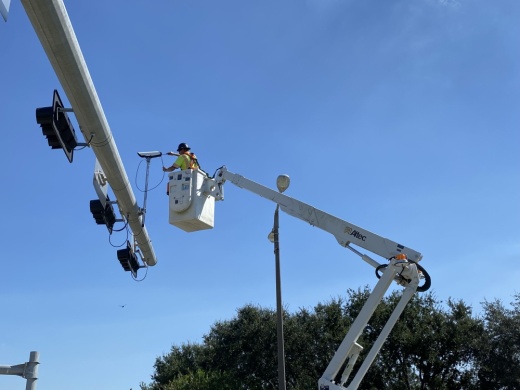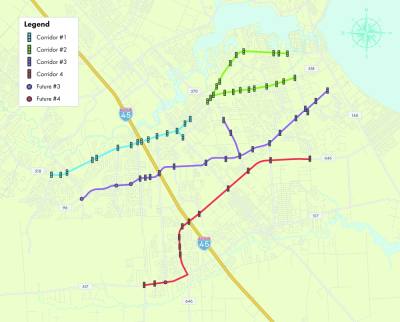In 2022, crews activated specialized adaptive software at 16 intersections along FM 518 and have begun installing the same software at 20 intersections along east FM 518 and Marina Bay Drive. Installation of the software along Hwy. 96 will begin in 2024, and FM 646 and FM 517 traffic signals will receive the software in 2025, Public Works Manager David Tickell said.
The software uses cameras that monitor traffic to communicate with each other and adjust traffic signal timings to improve traffic flow, he said.
Traffic signals typically have basic timings, which are preprogrammed and do not take into account real-time traffic, and coordination timings, which work together to get vehicles through multiple intersections. This new technology acts as a third layer by watching the coordinated signal timings and making improvements in real time, Tickell said.
“It’s getting feedback every minute and seeing what’s going on and makes adjustments,” he said.
Tickell said he has already seen a difference in traffic flows where the technology has been installed along FM 518. The I-45 construction has limited the improvements, however, he said.
“I’ve seen minor improvements, but there will be further improvements when construction’s done and I can do a study,” Tickell said.
The software can automatically do traffic studies to determine how often vehicles go through an intersection at various times and days. This saves the city money from having people manually do traffic studies every three to four years, Tickell said.
With these automatic studies acting as a baseline, the software will become more efficient at adjusting signal lengths to move vehicles through, Tickell said.
The software, which is used by other agencies, including the Texas Department of Transportation, is being installed to prepare for League City’s growth. Officials expect the city’s population to nearly double over the next few decades.
“We just want to be ready for it,” Tickell said. “The west side’s growing really fast.”
Tickell, who has been working with traffic for nearly 30 years, said he has tried other traffic-improving software in the past, but it has never been up to snuff. Now it finally is, he said.
“It’s neat to see the evolution of it all,” he said.






